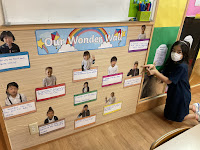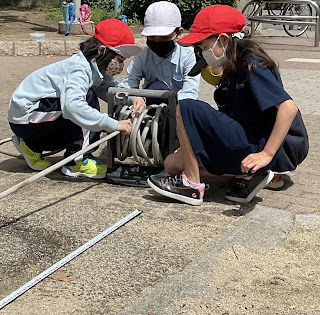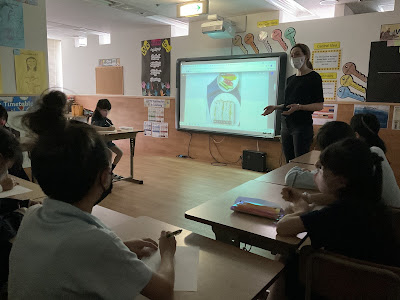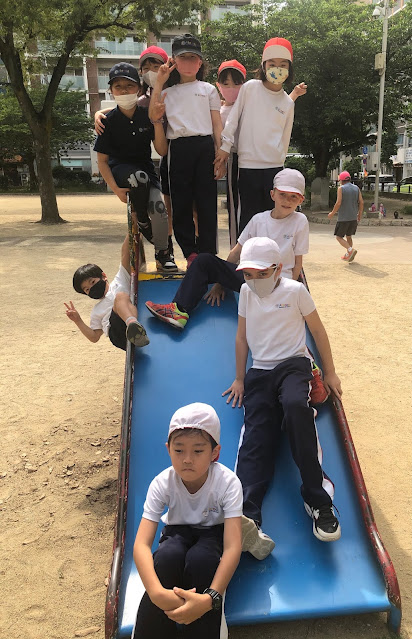Term1-Who We Are
Hello Parents,
Welcome to the 2021-2022 academic school year! I hope that Japan's amazing spring weather has given you all the opportunity to recharge, relax, and spend time with family and friends. School is officially back in session. As we settle back into the school routine, I am excited for the innovative and engaging opportunities ahead of us. Here’s to an extraordinary year of fun, productivity and exploration!
Unit of Inquiry
The unit launched with us describing the human body and considering a few questions, such as: What are the systems involved in a human body? How do the systems help in human health and survival? What choices do we make throughout the day for a healthy life? In addition, we activated our prior knowledge of the human body and its systems with our wonder wall. We used a wonder wall at the start of the inquiry to help provoke our thoughts on the theme. We also used the wall to share our learning throughout the unit. In order to further develop our background knowledge of the human body, we analyzed some videos and materials on the topic. Some of the videos we watched and discussed can be seen below.

We collaborated in small groups to reach a working definition of what counts as a system, using examples from everyday life. We inquired into how the human body is organized into systems of multiple interacting subsystems through videos, charts and models. In addition, we engaged in jigsaw reading activities to become experts on a specific body system. In groups, we utilized the research to conduct various presentations, with a focus on educating our peers on the topic.
We used a variety of resources to learn about the human body. We conducted a few experiments and recorded our expectations and observations. Here are a few highlights:
Experiment 1: Tennis Ball Experiment
One of the experiments we conducted was the tennis ball experiment. This experiment was done to show how hard the heart works, every minute of the day. After the experiment, we gathered and graphed the results and compared our data findings.
Parents as a Source for Guest Speakers
We invited guest speakers to help us understand the course learning outcomes in a more pragmatic way. We were well prepared to meet the guest speakers. We prepared thoughtful questions and were actively engaged in the discussions and activities. After the presentations, we made a conscious effort to link course materials to the insight from the speakers. Here are some of the highlights from the presentations:
We enjoyed Mrs. Isabelle's presentation on Healthy Eating for Children. She brought a lot of energy to our class. Mrs. Isabelle gave a presentation on the relationship between food and health, finding and choosing healthy foods, nutrients and their food sources. We were all inspired by the presentation, so we decided to participate in a healthy food challenge to improve our health and wellness.
We were thrilled to welcome Dentist Inami to our classroom. She educated us on dental care and discussed the basics of oral hygiene, such as proper brushing technique, cavity, dietary habits and how to establish routine dental care procedures.
In English, we explored the different writing styles. In groups, we defined 'writing style' and identified types of writing and their characteristics. We discussed which type of writing is best to use in certain situations. Based on our discussion, we decided as a group that persuasive writing will be our first focus. We looked at the main components of persuasive writing: logic and emotional appeal. With thought-provoking prompts, we developed stories and practiced writing techniques with relevant, interesting writing lessons. In addition, we watched videos on the topic and analyzed several authors’ persuasive arguments to broaden our understanding. Moreover, we continued to explore the important elements of story writing by doing various literacy activities.
We set out to learn and understand the importance of area and perimeter in real-life situations. We had a great time using different strategies to measure and calculate the area and perimeter of shapes. We also learned the concept of rounding numbers up and down by 10 and 100. We enjoyed reciting a few poems to help us grasp the concept of rounding numbers. In addition, we explored the concept of multiplication. In exploring this topic, we were able to think about the relationships, strategies and tools used to solve multiplication problems. We did a lot of work to build our conceptual understanding of multiplication through models and other strategies.
Maths Week is a week-long celebration of the importance of maths in our everyday lives. This event was a great success. It provided a great opportunity for us to have fun and be creative while learning maths. Throughout the week, we were encouraged to participate in a number of engaging and relevant activities to expand our understanding of mathematics concepts.




















































































Comments
Post a Comment